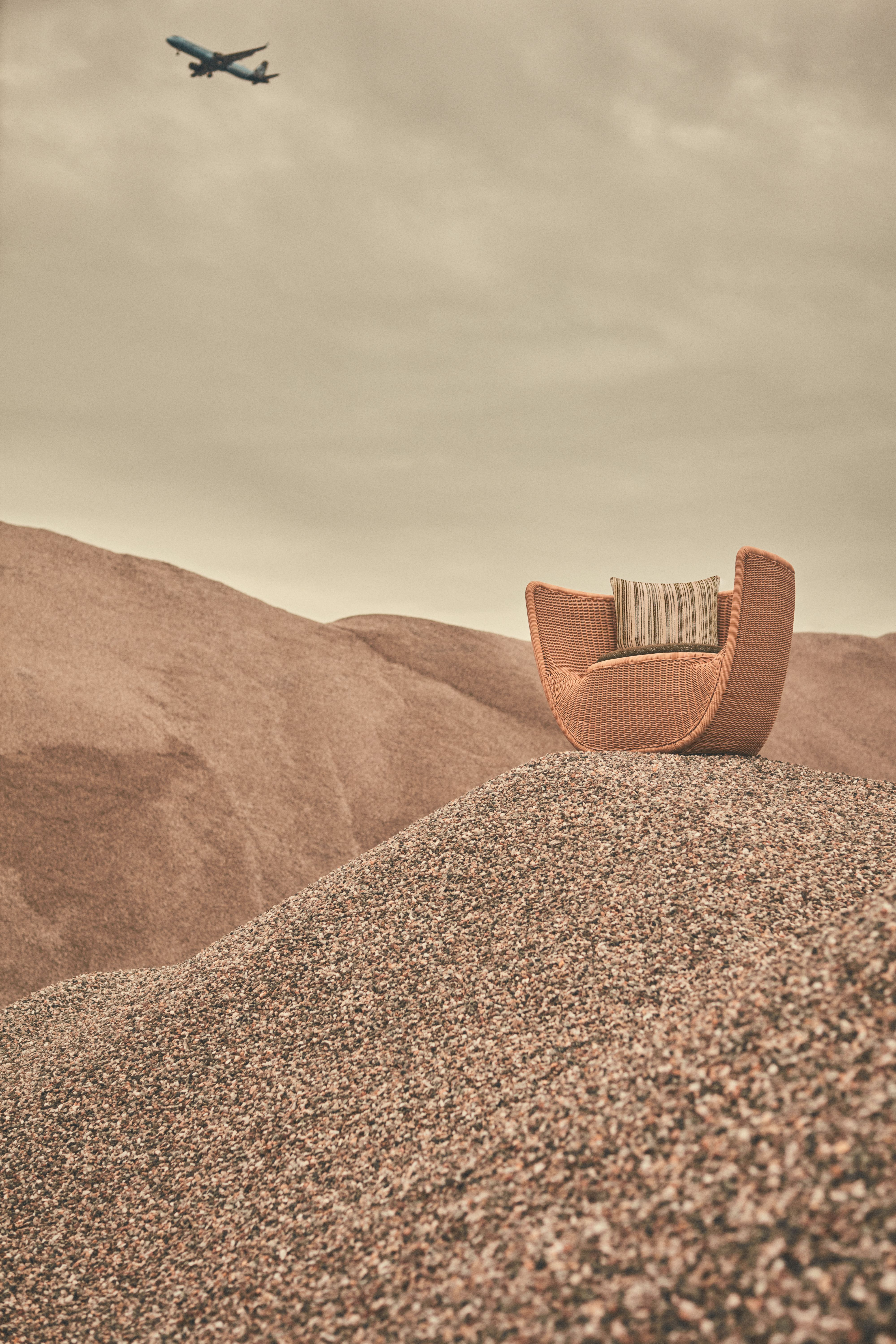
Maddalena De Padova’s studio in Milan. Photo courtesy De Padova.

Over the years, De Padova has collaborated with some of the design world’s most renowned talents, including Vico Magistretti, Ingo Maurer, Nendo, Paul Smith, Maarten Van Severen, Patricia Urquiola, and more recently Raffaella Mangiarotti, Elisa Ossino, David Lopez Quincoces, Omi Tahara, and Keiji Takeuchi. Many of their De Padova designs are featured here.
“A sofa can’t make people emotional, but it can lead them to a nice emotion.” This quote by the late Maddalena De Padova (1928–2016) perfectly captures the philosophy behind the Italian design brand she cofounded in the 1950s with her husband, Fernando. What started as a small furniture showroom on Via Montenapoleone in Milan has since grown into the brand coveted by design lovers and synonymous with elegance, simplicity, and a distinctive blend of styles.

Portrait of Maddalena de Padova. Photo courtesy De Padova.
De Padova began with a vision: introducing Italian audiences to the sleek, functional beauty of Scandinavian design, and later to the work of American icons such as Charles and Ray Eames and George Nelson. By securing licenses to produce Herman Miller products, the couple brought a fresh, somewhat Nordic aesthetic to an Italian market then saturated with historical pastiche. “When we went to Scandinavia,” remembered Maddalena in a late-in-life interview, “we discovered a whole new way of living”: a pared down, spatial clarity, simple shapes, and natural materials. “We knew we had to bring this back home.” It was a bold move, setting the stage for a transformative era in design in Italy and beyond.

The armchair from De Padova's 2024 outdoor lounge collection Afternoons, designed by Omi Tahara. Photo courtesy De Padova.
The early 1980s marked another turning point for De Padova. After Fernando’s untimely death, Maddalena decided to transition De Padova from distribution to design editing, establishing the house-brand Edizioni De Padova. Perhaps the most fruitful collaboration fostered by the brand was between Maddalena and renowned designer Vico Magistretti (1920–2006), who is responsible for some of De Padova’s most iconic pieces to date: the deceptively simple Vidun table (1987), the timeless Raffles sofa (1988), the Uragano wicker dining chair (1992), the saddle-shaped Louisiana lounge chair (1993), and the Pillows sofa (2004), which was reintroduced in 2024. Maddalena has also hosted regular design exhibitions at the brand’s legendary flagship location on Corso Venezia — an early design concept store — including one on Shaker furniture, a passion of hers. (Maddalena’s personal Milan home, photos of which continue to inspire design mood boards today, was also filled with it.)

Calling the late Maddalena de Padova a tastemaker is an understatement; her Milan home exemplified her unmatched ability to blend styles and eras — Shaker, Japanese minimalism, and Scandinavian design — into elegantly comfortable environments. Photo courtesy De Padova.

Maddalena De Padova’s studio in Milan. Photo courtesy De Padova.

Maddalena De Padova’s studio in Milan. Photo courtesy De Padova.
In the years that followed, De Padova continued to evolve through partnerships with leading contemporary designers like Achille Castiglioni, Maarten Van Severen, Piero Lissoni, Patricia Urquiola, Paul Smith, and Nendo, who all brought fresh perspectives and innovative design elements to the brand. (Fun fact: In 1985, Ingo Maurer designed one of his rare non-lighting pieces for De Padova, the foldable arm-meets-lounge chair Tattomi, a collaboration with Jan Armgardt.) Beyond creating innovative individual design pieces, De Padova has demonstrated a remarkable ability to curate complete environments — or as Maddalena would describe it, “the ability to put things together” — to create a cohesive whole. This talent did not go unnoticed by Roberto Gavazzi, the longtime CEO of the luxury Italian kitchen maker Boffi; and in 2015, Gavazzi integrated De Padova into the Boffi Group. Now part of the Boffi|De Padova group, De Padova completes the portfolio of luxury home solutions offered by Boffi and ADL, the exclusive doors and partitions brand, creating a comprehensive range of products and services for everything from private residences to luxury hotels.

Portrait of Maddalena de Padova. Photo courtesy De Padova.
Now, as the company enters its 68th year, Maddalena’s pioneering spirit continues to reverberate in De Padova’s newest collections: an uncluttered Nordic sensibility paired with an unapologetically Italian sense of refinement, interpreted by a roster of international designers. This year alone, De Padova has released, among others, a collection of hand-woven outdoor furniture by Omi Tahara; seating and lighting by David Lopez Quincoces; a sumptuously dark, foldable armchair by Raffaella Mangiarotti; modular lighting by Elisa Ossino, which does away with visible fastening; and a circular table by Keiji Takeuchi with a silhouette inspired by Polynesian plants. Just as Maddalena once perfected a new way of living in Italian homes, De Padova’s current generation of designers is poised to expand on her well-established language, redefining contemporary living spaces for a new global audience.